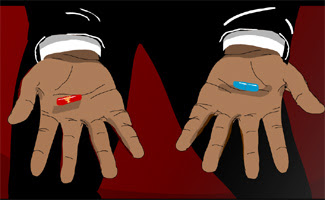The Great Game Again
This time not between Russia and the UK over who dominated Central Asia, but between the US-led punitive coalition and the still kicking Al Qaeda soldiers and splinters in Afghanistan. Very true that Al Qaeda inspired terrorism is a global scourge and Singapore faced such terrorism problems before and the SAF’s operation there is being part of the solution. But apart from that and although there is nothing said about such a deal, Singapore’s involvement is probably also because of some quid pro pro with the US military – SAF shows support in the Afghan theatre and perhaps some military hardware and technology sale to Singapore soon in return.
Actually, it does not look like a fair exchange to some as it means SAF needs to send and risk its troops to buy hardware, rather than send troops in order to SELL hardware. Aside, while ST failed to sell the US the Bionix years ago, the proudly homemade Broncos were sold to the Brits. Still, like the small effort to gun down Somali piracy of which RSN is part of, SAF’s little Afghanistan adventure no doubt provides expansive operational experience to the SAF.
S’pore to provide more Afghanistan assistance
Singapore is sendind more troops as part of the international effort to help rebuild the war-torn country.
Thu, Jul 01, 2010
my paper
BY LOW WEI XIANG
SINGAPORE will be sending more soldiers to Afghanistan in the next few months, bringing the total tally for the whole year to a record 162 troops, up from 97 last year.
Singapore is doing so as part of the international effort to help rebuild the war-torn country and, in turn, safeguard its own security, Deputy Prime Minister and Defence Minister Teo Chee Hean said.
In an interview ahead of SAF Day today, Mr Teo said that Singapore’s security is affected by what happens in Afghanistan.
To illustrate this, he cited the example of how Jemaah Islamiyah members in Singapore who were detained in 2001 and 2002 for planning a terrorist attack on Yishun MRT station were found to have links with the Taliban and Al-Qaeda in Afghanistan.
A video tape of a reconnaissance of the MRT station was found in 2001 in the Al-Qaeda operations chief’s house in Afghanistan’s Kabul.
Mr Teo said: “Our purpose in Afghanistan is to support the international efforts there, to try and bring stability to Afghanistan so that Afghanistan will not be a location from which terrorism is exported to other parts of the world including to our region and to Singapore.”
Next month, the Singapore Armed Forces (SAF) will send a 52-man unmanned aerial vehicle (UAV) team – its biggest deployment to Afghanistan – to Oruzgan, one of two provinces where Singapore has troops.
For about three months, the team will use the UAVs – a pilotless plane – to gather intelligence and carry out surveillance for the International Security Assistance Force (ISAF), a peacekeeping mission led by the North Atlantic Treaty Organisation.
For example, they will ensure that roads are safe and free from explosive devices for both Afghans and overseas forces.
From September, SAF will deploy another team to train personnel from the Afghan National Security Forces to use artillery weapons and systems.
It will do so jointly with the Australian Defence Force, which will build an artillery training institution in Kabul or Kandahar.
For a start, at least six trainers are expected to be deployed there for three to six months.
The number of trainers is expected to grow to about 10 next year.
A 21-man weapon-locating radar team, which has been providing advanced warning of enemy rocket attacks to the ISAF base in Oruzgan since last September, will have its stay extended till the end of this year.
But the SAF will conclude its operations in Bamiyan this year, after about four years. The six engineers there will return at the end of October.
SAF’s contributions – mainly in developing medical capabilities there – have become “less significant”, as the province has become “relatively stable” and such services can be provided by aid organisations, said Mr Teo.
The efforts will be supported by an improved third-generation SAF, which taps more on improved technology and equipment for all personnel to be more effective in their roles.
Mr Teo said that such developments will require five to seven more years to be rolled out.
One of these is the Terrex, an advanced infantry-carrying vehicle that allows soldiers to communicate with other armed vehicles like attack helicopters, which has been introduced into an infantry battalion. It will be rolled out to other battalions over several years.
Having a more capable SAF allows Singapore to be a “player” in shaping the environment, he said. Otherwise, Singapore will be only a bystander with limited influence or say in determining outcomes, he added.
weixiang


Pingback: Daily SG: 2 Jul 2010 « The Singapore Daily
Pingback: Weekly Roundup: Week 27 « The Singapore Daily